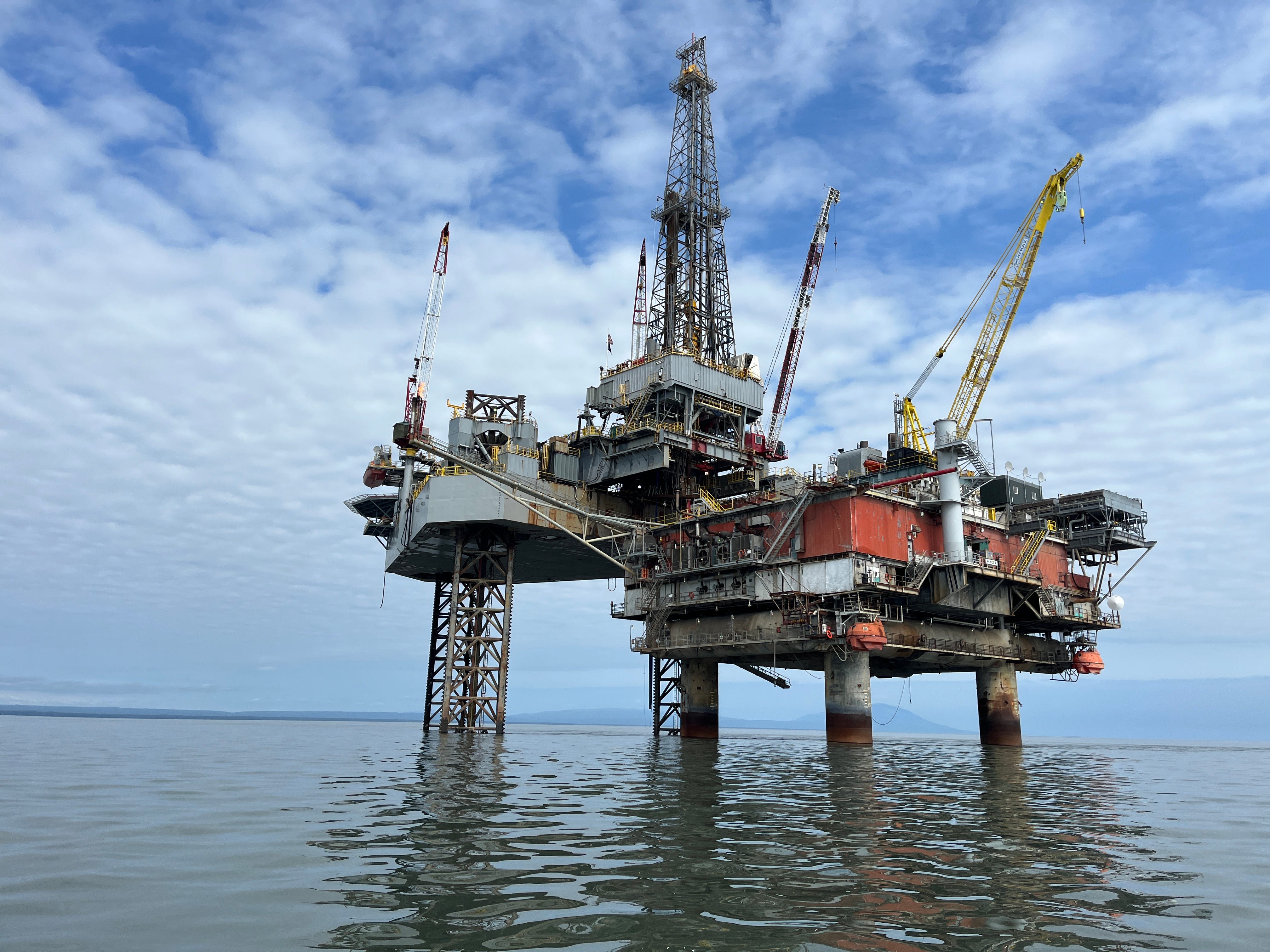Amid natural gas crunch, an Alaska utility asks to resurrect in-state gas pipeline
Enstar wants to take over the project last estimated to cost $10 billion. But its own chief executive acknowledges that the pipeline isn't viable without multi-billion-dollar subsidies from the state.

This edition of Northern Journal is sponsored by The Boardroom, a shared workspace in Anchorage. I use their array of comfy and light-filled spaces as an alternative to my home office, and I also enjoy the free kombucha and convenient access to downtown. Check out membership options here.
Northern Journal is a reader-supported publication. To receive new posts and support my work, consider becoming a free or paid subscriber.
For the past several years, Alaska’s elected leaders have largely set aside a proposed natural gas pipeline that would connect the state’s huge North Slope oil fields solely with urban homeowners and electric utilities, dismissing the idea as too expensive.
Instead, they’ve prioritized a much larger project that would export liquefied natural gas, or LNG, to Asia. That proposal, known as Alaska LNG, would also supply consumers inside the state, with the Asian customers helping to subsidize its cost.
Now, the for-profit utility that sells natural gas in Anchorage and the surrounding area is pushing to resurrect the version of the project that’s only for in-state use. It says the project could be a solution to the state’s impending natural gas supply shortfall — even as its own top executive acknowledges that the pipeline requires a long-shot, multi-billion-dollar state subsidy.
Enstar Natural Gas, which serves some 60% of the state’s population, recently asked for permission to take over the proposal from the Alaska government agency that currently owns it, according to a copy of Enstar’s request reviewed by Northern Journal.
The request comes at a sensitive time both because of the supply shortage and also because the state agency, the Alaska Gasline Development Corp., is currently prioritizing the export-focused Alaska LNG project.
Alaska LNG has support from Republican Gov. Mike Dunleavy, Alaska’s Congressional delegation and even key members of the Biden administration. But the project, with a price tag estimated at $43 billion, is reportedly facing skepticism from Asian buyers.
Enstar, in its recent request, said that it should be allowed to pursue the smaller scale project in case Alaska LNG fails.
In public opinion polling, Enstar said, Alaskans strongly prefer a pipeline to another leading alternative to address the looming shortfall: importing LNG from outside the state.
Urban Alaska’s gas currently comes from Cook Inlet, the aging basin offshore of Anchorage. But available supplies are running low.

“It is not prudent for the state of Alaska to be ‘pens down’ on the best alternative, which could monetize North Slope gas for the benefit of Alaskans in the event the (Alaska LNG) project does not succeed,” Enstar said in its undated, two-page proposal.
A spokesman for AGDC, Tim Fitzpatrick, declined to comment directly when asked about Enstar’s proposal.
He added: “AGDC, consistent with our mission, continues to work with Alaska utilities on the best way to meet in-state energy needs.”
Despite Enstar’s enthusiasm, the in-state pipeline project faces a major hurdle: its cost, last estimated — several years ago — to be some $10 billion.
A report commissioned by Enstar earlier this year said that without subsidies, the project would supply gas at no less than $28 per thousand cubic feet.
That’s more than three times the $8 that utilities pay now. And it’s still more than twice as expensive than the $12 utilities expect to pay for imported LNG.
If state government subsidizes the project or builds it itself, that could reduce the price of in-state pipeline gas to as little as $7.30, the report found.
But the expense could be enormous — a fact that Enstar’s own chief executive, John Sims, acknowledged in an interview last month, before his company’s request was made public.
“In order to make it cost-competitive, unless there’s additional demand that comes on that pipeline over and above what’s existing today, it’s going to have to have about an $8 billion grant,” Sims said. He added: “I don’t think there’s any interest from the state Legislature to give a few billion dollars for a pipeline.”
Sims, in the August interview, said Enstar is not doing any “significant work” on the in-state pipeline and is waiting for a consultant to finish the next stage of its study on the three leading options for filling gas shortfalls: new drilling in Cook Inlet, a pipeline from the North Slope or LNG imports.
“At this point, we don’t have a priority,” Sims said. “We’re looking at how to serve all of our customers here.”
Sims would not agree to an interview about Enstar’s recent proposal. But he said in an emailed response to questions that his previous statement about the need for a subsidy, and the lack of political interest in granting one, is still accurate.
Enstar’s proposal is the latest development in the complicated effort to address the impending gas shortfall for the Railbelt — the area of urban Alaska that stretches from the Kenai Peninsula through Anchorage to Fairbanks.
For decades, Railbelt residents have depended on Cook Inlet natural gas for cooking, home heating and electricity generation.

Some 90% of that gas is produced by oil and gas company Hilcorp, which has warned Enstar and the region’s electrical utilities that it can’t guarantee a sustainable supply when existing contracts expire over the next several years.
To fill the expected gaps, the Railbelt’s largest member-owned electrical utility, Anchorage-based Chugach Electric Association, is looking at using either a new, floating storage unit or repurposing an existing LNG export facility on the Kenai Peninsula to accommodate imported LNG shipments.
Chugach executives say they expect their need for LNG imports will be temporary, as they move from a system that generates 80% of its power with natural gas to one that depends mainly on hydroelectric, solar and wind projects.
Enstar is in a different position.
Experts say the utility’s long-term demand for natural gas could be somewhat reduced by the adoption of heat pumps, which can run on electricity from renewable sources instead of the fossil fuels burned by home boilers and furnaces.
But it’s likely that Enstar, which is owned by Canadian pension funds through parent company TriSummit Utilities, will need to secure a longer-term supply of natural gas than the electric cooperatives.
In a recent filing with securities regulators, TriSummit said that instead of expecting reduced demand, Enstar is actually positioned to expand its business.
“TriSummit Utilities believes Enstar has growth potential and intends to work closely with Enstar management to invest and support economic growth in the region,” the company said.
A state-subsidized in-state pipeline project would allow Enstar to maintain its profits, said Mark Foster, an economics consultant who’s worked as a utilities regulator. But the cost would be "comically large," and the $76 billion Alaska Permanent Fund is the only state bank account that would be big enough to cover it, he said.
Billion-dollar subsidies could reduce the yearly dividends paid to Alaskans, diminish the amount of money available for state spending on health care and education and force the state to miss out on renewable energy investment opportunities that could qualify for federal support, Foster added.
Enstar, he said, “has a fiduciary responsibility to see how gullible the locals are.”
“And then it is incumbent on elected officials to stand up — as the people who built Alaska did in the early era of oil — and go, ‘We need our fair share. And you guys don't get to take advantage of us,’” Foster said.
Sims, in a follow-up message, would not rule out the possibility that Enstar would propose or advocate for a Permanent Fund investment in the in-state pipeline.
“If the state of Alaska wants to lower the cost of electricity and natural gas it will have to subsidize the cost of the infrastructure,” he said. “It’s too early to talk about where the money comes from because we haven’t selected a project to meet the Railbelt’s energy needs yet.”
The chair of the Permanent Fund’s board of trustees, Ethan Schutt, said he thinks the in-state pipeline is “the best long-term solution to our energy supply problem.” But the project should be paid for with state bonds, not the Permanent Fund, he added.

“I'm adamantly opposed to the idea of using the Permanent Fund to invest in capital projects,” Schutt said. “That is a slippery, fast slide to the death of the fund as a ‘permanent’ fund.”
Both Foster and Schutt said they see huge subsidies for the in-state pipeline as a clear political non-starter — to the point where, they said, Enstar’s push to advance the project appears to be driven by some other motive.
“It’s a cover for something else,” Schutt said. “It’s a stalking horse proposal.”
Northern Journal is a newsletter written by me, Anchorage journalist Nat Herz. It’s free to subscribe, and stories are also free to Alaska news outlets to republish through a partnership with the Alaska Beacon.
My goal is reaching the broadest possible audience of Alaskans. But if you can afford it, please consider supporting my work with a $100 annual or $10 monthly voluntary paid membership — these are currently my only sources of revenue for this project. Your support allows me to stay independent and untethered to the demands of the day-to-day news cycle. If you’ve already subscribed, thank you.



